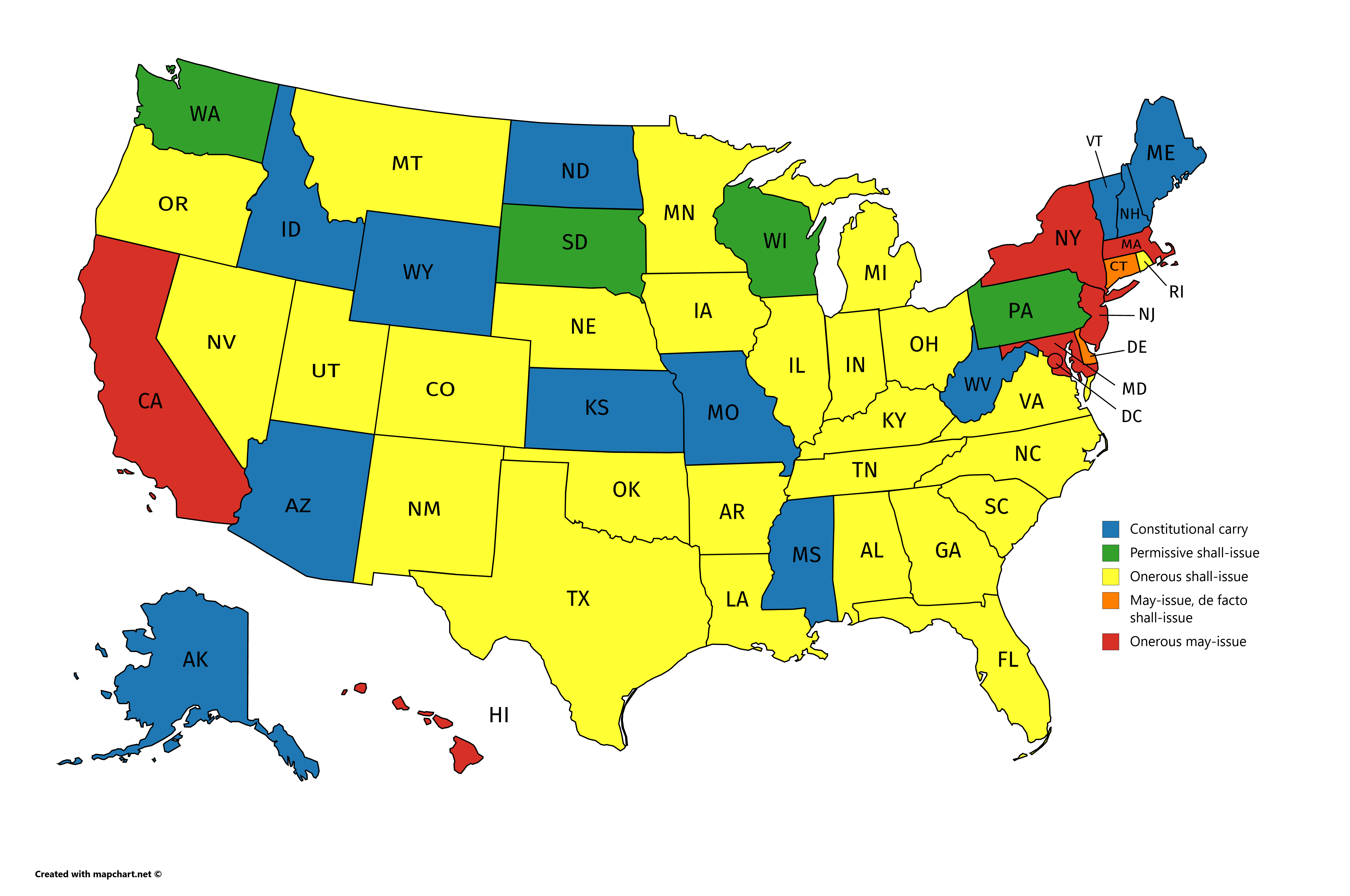A couple weekends ago, I went to a Carbine 1 class. I had a great time. Classes are a great way to build skills. And, also a good place to test equipment and compare notes.
I brought Bridget, with a couple modifications. Bridget is admittedly a competition gun, but that’s my primary AR-15 use case. When I do drills, she’s the carbine I’ll be grabbing, so I figured it was good to get a baseline with her. I swapped out buffers, moving to an H2-weight buffer, and switched to a Springco Blue buffer spring, which is heavier than standard. These on the recommendations of Mike Pannone, who has an excellent treatise on maximizing AR-15 reliability.
I also decided to switch triggers. I love the Geissele SSA-E, but I happen to also have an AR Gold laying around, and that trigger is the trigger of choice for a ton of high level multigun competitors, including Kalani Laker, Daniel Horner, and Jerry Miculek. The AR Gold claims to duplicate the feel of a well-tuned 1911 trigger, and I’d say they’ve done their job. Other than the geometry being different, with the AR-15 trigger having a pivot. There’s a very, very short take up and then a light, crisp break. And then a very short reset. It feels a lot like the trigger in my Springfield Professional.
I also brought a more traditional Colt 6920 as a backup gun. Always bring a second gun to class, just in case your primary goes down. Then you can keep right on learning.
Pretty quickly, I learned that I had done a really good job when I built Bridget. I had no malfunctions. She ran great. Everyone who picked up my rifle commented on how light it was, how easily it pointed and transitioned. Being a four-person class, we all got to try each other’s rifles. Bridget got top marks for weight, and top marks for lack of recoil. Even with mediocre technique, the muzzle really doesn’t rise at all. And with good technique, you can shoot as fast as you like and keep your rounds on target.
Of course, all of this comes at a price. Bridget was the loudest carbine by far. Angry SBR loud. .308 loud. Wear your earpro.
Also, light weight has its downsides too. Bridget is less stable. She’s easier to disturb accidentally, which was a bit noticeable in some of the marksmanship portion. She really forces you to focus on a good prone position.
The trigger was also really good. On the one hand, the light, short reset means you do need to focus if you’re trying to let the trigger out to the reset point and stop. But just like a good 1911 trigger, it was basically impossible for the trigger pull to disturb the rifle sights. Even when I tried to go fast and slapped the trigger around. The slow point in drills was transitions and my fatigue, not trigger control.
I added a sling attachment point for the purpose of the class. I also got some keymod rail covers. These were welcome. That aluminum-magnesium rail got very hot to the touch. Note to self next time: wear gloves.
Of course, I never come out of a class not wanting more stuff. One of the guys had some Crye Magclips. These are a really great way of easily adding a few extra magazines to your loadout. They’re not super secure, but they don’t have a big footprint, and they’re pretty cheap. Perfect for carrying a little extra out to the firing line.
Also, for probably the millionth time: knee pads. Very helpful for kneeling and prone. Very, very helpful. If your instructor is wearing kneepads to class, you should too.
New though would be elbow pads. Pistol classes don’t do a ton of prone shooting. Rifle classes do. It’s nice to have something to protect your elbows from errant rocks or recently fired spent brass. Ask me how I know.
My equipment was not all perfect. I found that my Elcan 1.5x/6x was noticeably slower on drills than my Aimpoint Comp M4s. The Elcan was also kind of obnoxious for switching between standing and prone shooting. Another shooter had time on an Elcan in a class setting (and had also brought an Aimpoint to this class) and we both figured it was a combination of a smallish eyebox and relatively short eye relief that makes the Elcan a little more awkward for this type of transition-heavy shooting. On my list of optics to go for next is probably the Swarovski low power variable, because it has a much bigger, more forgiving eyebox and better eye relief. I’ll report back here with my findings.
One more lesson, this from observing another shooter. If you’re going to use an adjustable gas block, be sure you can access it without removing your handguard. Removing handguards is a pain, and it can be very difficult in the field. We had a shooter who noticed his gas block was coming unset from where he wanted it, but was unable to access the adjustment valve with the handguard he had on his rifle. And he wasn’t able to remove that handguard with the tools he brought with him. He switched to his backup gun for the remainder of the class.
